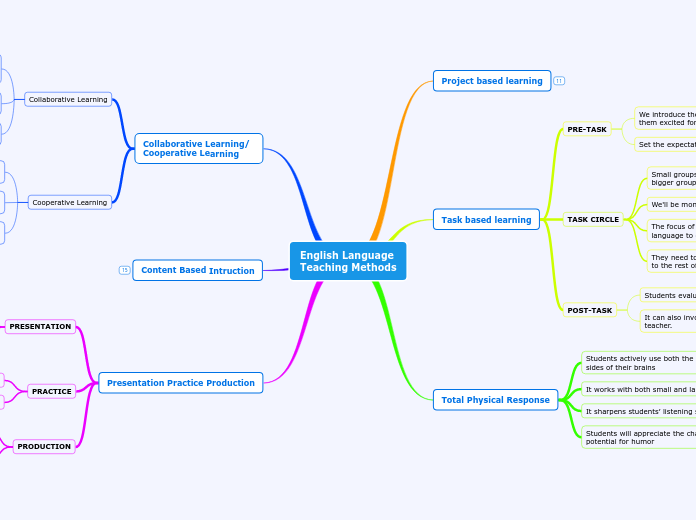English Language
Teaching Methods
Project based learning
Task based learning
PRE-TASK
We introduce the task to the students, and get them excited for the task
Set the expectations for the task
TASK CIRCLE
Small groups or pairs are good, rather than a bigger group
We'll be monitoring what students do.
The focus of this stage is fluency - using the language to communicate.
They need to plan how they are going to report it to the rest of the class or to other groups
POST-TASK
Students evaluate their performance
It can also involve feedback provided by the teacher.
Total Physical Response
Students actively use both the left and right sides of their brains
It works with both small and large groups
It sharpens students’ listening skills
Students will appreciate the change of pace and potential for humor
Collaborative Learning/ Cooperative Learning
Collaborative Learning
The activity is not monitored by the teacher (although they can help when assistance is requested by the group)
Students assess their own individual and group performance
Students organise their efforts between themselves
Cooperative Learning
Activities are structured with each student assigned a specific role (teacher-structured)
Teachers observe, listen and intervene where necessary
Students submit work at the end of lesson for evaluation/assessment
Content Based Intruction
Presentation Practice Production
PRESENTATION
This is where the language is introduced, or ‘presented’ to the learners introducing a context or situation.
The teacher must be sure students understand the context.
PRACTICE
Students use the language in a controlled way
The aim of this stage is accuracy.
PRODUCTION
Language is used in a more open way
The focus of this stage is using the language as fluently and naturally as possible
